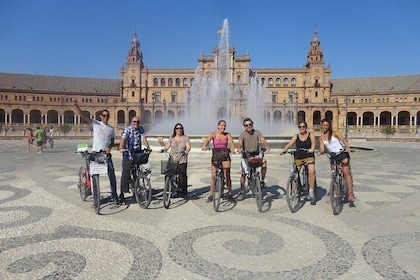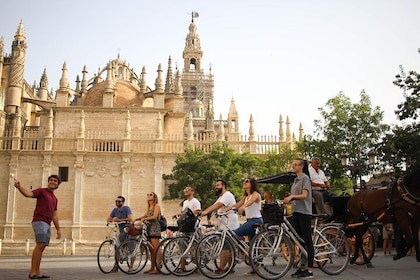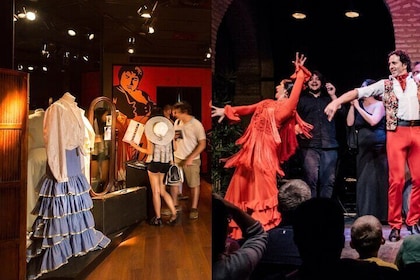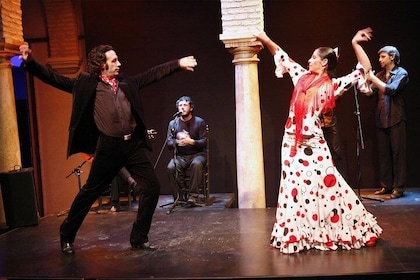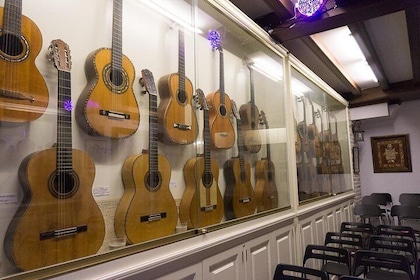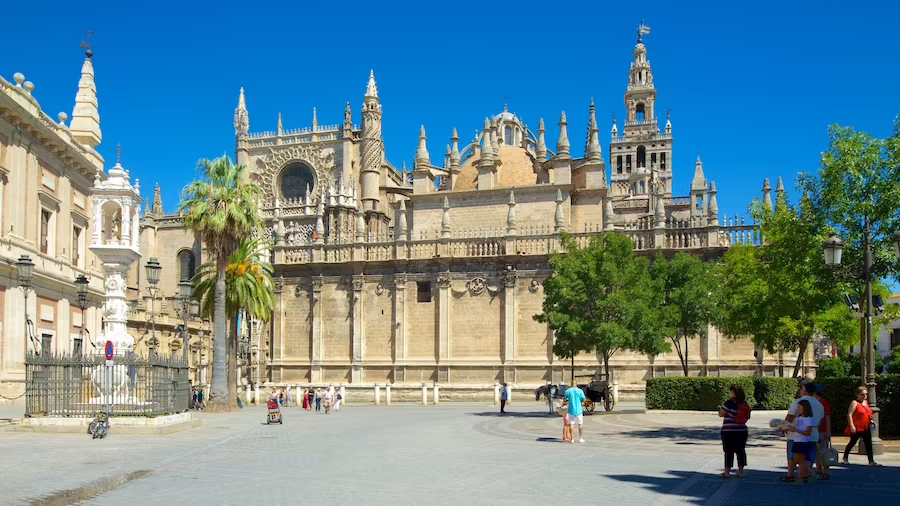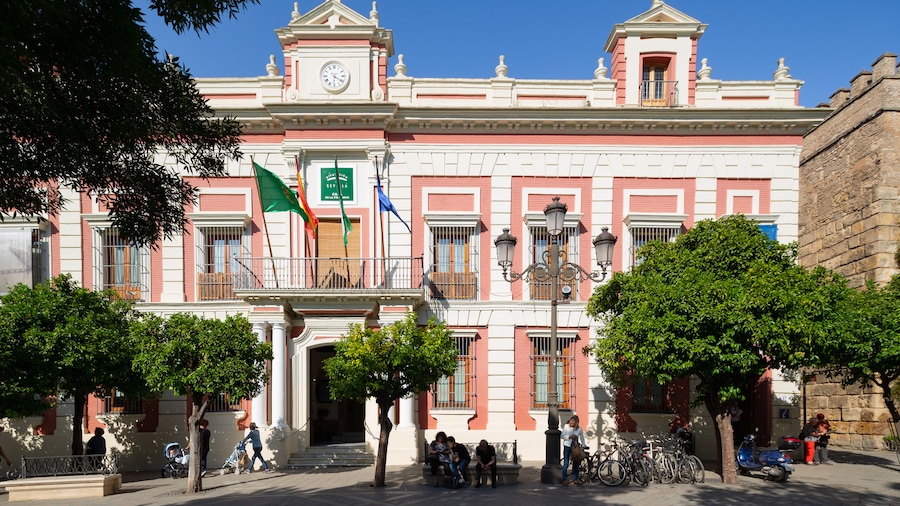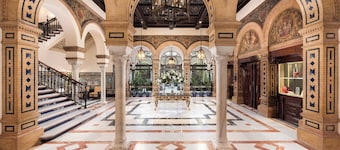This ornate belfry has an interesting past before being one of the Cathedral's towers, it was a minaret.
Seville is a city awash with historical architecture, and la Giralda is the jewel in its crown. La Giralda was initially constructed as a minaret, completed in 1196. Those behind it were the Almohades, a Berber-Muslim dynasty which had a stronghold over Iberia during the 12th and 13th centuries. This is the only minaret of its kind in Spain the other two are in Rabat and Marrakesh. During the Reconquista of 1248, the country's Christians decided not to tear the minaret down, but rather to incorporate it into a cathedral. The top third of the tower was added in the 16th century, its architecture decidedly different to the rest.
La Giralda stands 104 metres tall and is recognisable from many areas of Seville. It's only when you get up close to it, however, that you fully appreciate the artistry that went into it. Towards the bottom of the structure, you'll come across inscriptions concerned with the Roman emperor Augustus. Further up is a series of beautifully-carved balconies and intricate lattice work. Towards the top of la Giralda, the Spanish Renaissance influence is plain to see. The “Lily Section” contains the bells, and is crowned with a bronze female figure.
Make sure you climb to the top of la Giralda, which can be accessed from Seville Cathedral. At the top of the belfry, you'll be rewarded with breathtaking views of Seville, as well as a closer look at the detailing on the buttresses and gargoyles. Allow yourself time to explore the gorgeous interior of the cathedral too.
This tower has inspired many that followed it, especially those in the United States. Among them are Chicago's Wrigley Building, the Terminal Tower in Cleveland and the Ferry Building's clock tower in San Francisco.
La Giralda is in the Old Town, on the east bank of the Guadalquivir River. Its opening hours are the same as those of the cathedral. Admission is included with entry to the cathedral.
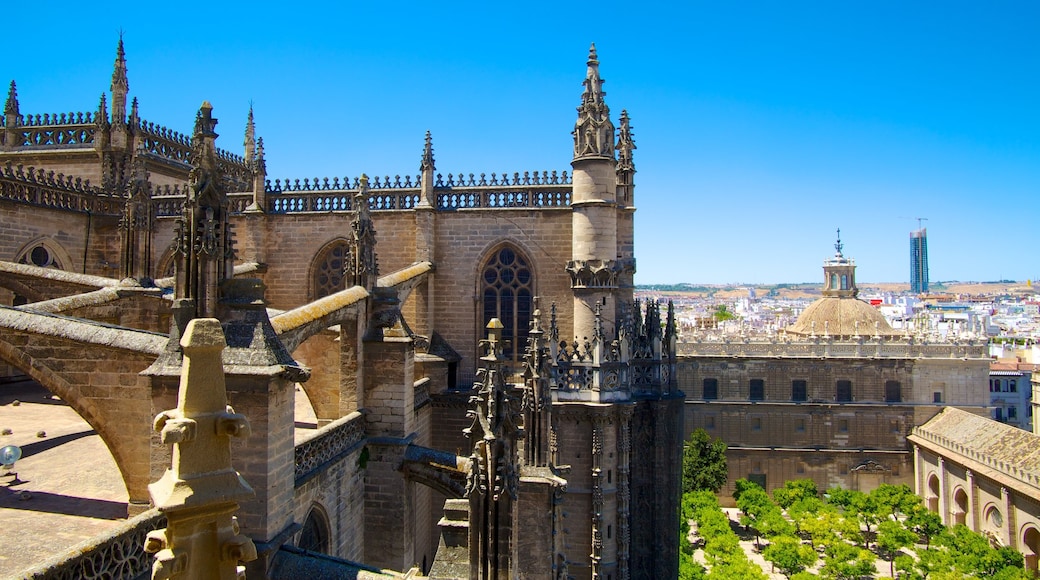





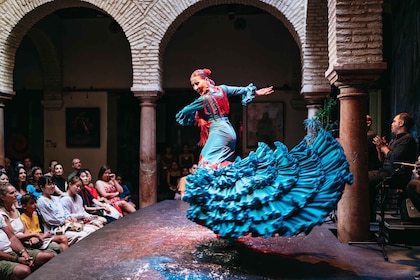
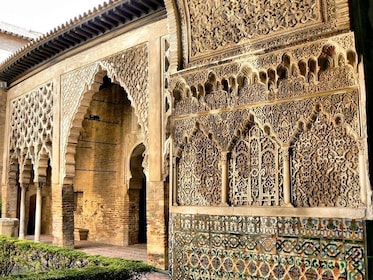
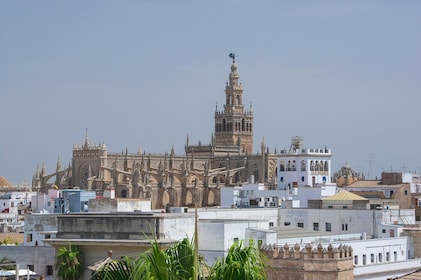


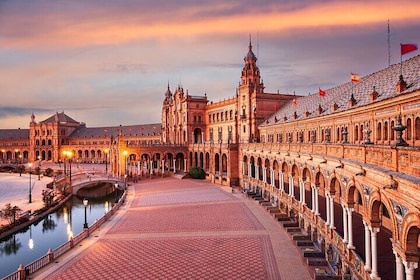










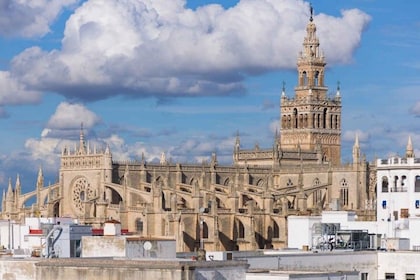





![Seville: Outdoor Escape Game - BlackOut [Hard Mode]](https://mediaim.expedia.com/localexpert/48139811/ec100593-9560-43b6-acaa-ba06bade4ddd.jpg?impolicy=resizecrop&rw=500&rh=280)




